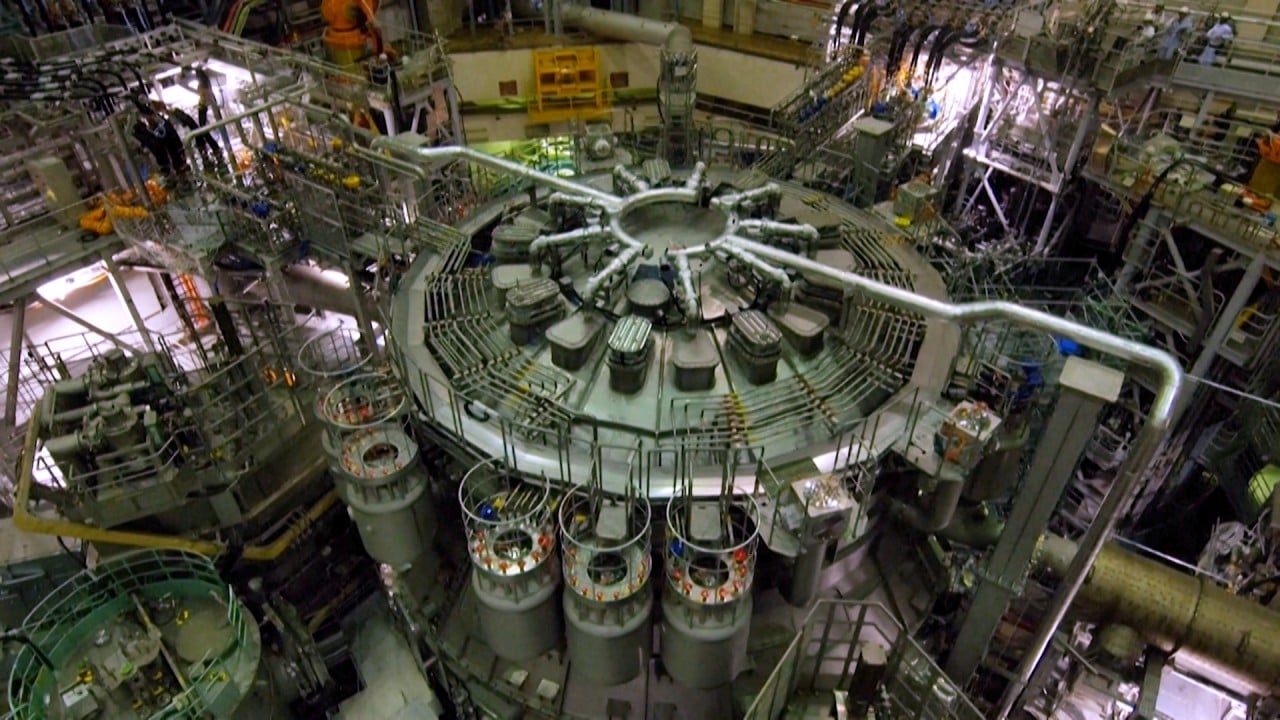China-led team seeking elusive quantum of gravity finds first evidence of particles behaving like gravitons
A China-led team has detected the first experimental evidence for particles that behave like a graviton, a long-sought-after particle that gives rise to gravity, a fundamental force in our universe.
By putting a thin layer of semiconductor under extreme conditions and exciting its electrons to move in concert, researchers from eastern China’s Nanjing University, the United States and Germany found the electrons to spin in a way that is only expected to exist in gravitons.
Although the experiment did not confirm the existence of gravitons directly, it was the closest scientists had been and would open a new pathway to the search for gravitons in laboratories, the team reported in the journal Nature this week.

02:01
World’s deepest laboratory opens in southwest China in search of dark matter
World’s deepest laboratory opens in southwest China in search of dark matter
“Our work has shown the first experimental substantiation of gravitons in condensed matter since the elusive particle was conceptualised in the 1930s,” the study’s lead author Du Lingjie from Nanjing University told state news agency Xinhua on Thursday.
“The graviton is a bridge connecting quantum mechanics and general relativity theory. If confirmed, it will have huge implications for modern physics research,” he said.
The study was highly collaborative, according to the paper. Researchers at Princeton University prepared high-quality semiconductor samples, while the experiment was carried out at a unique facility that took Du and his team three years to build.
In Albert Einstein’s theory of general relativity, he described gravity as space-time distortions caused by mass and energy. Such a theory, which explains gravity beautifully at a large scale, poses challenges in quantum mechanics which governs the universe at the smallest scale.
As a result, the graviton was proposed as a particle dedicated to carrying gravity. If it existed, a graviton should be massless and travel at the speed of light – except that, so far, gravitons have never been observed in space.
When Du was a postdoctoral researcher at Columbia University in 2019, his team discovered a special excitation phenomenon in quantum materials that led theoretical physicists to think it could point to the detection of gravitons.
How the toy that stumped Einstein is inspiring a Chinese search for clean energy
However, the requirements for conducting such experiments were high. The system needed to be placed in a powerful refrigerator where temperatures are near absolute zero, and exposed to a magnetic field 100,000 times stronger than the Earth’s average magnetic field.
Some requirements could even appear contradictory. “For instance, we have to install windows on the refrigerator to make optical measurements, but the windows can cause the system’s temperature to [easily rise],” paper co-author Liang Jiehui, of Nanjing University, told Xinhua.
Du spoke to Xinhua about working in the team’s home-developed facility. “Working at minus 273.1 degrees Celsius, a special ‘microscope’ like this can capture particle excitations as weak as 10 gigahertz and determine their spin,” he said.
The researchers used a flat sheet of gallium arsenide semiconductor, which when subjected to low temperature and a magnetic field showed a phenomenon called the quantum Hall effect.

02:24
A look inside the world’s largest nuclear fusion reactor in Japan
A look inside the world’s largest nuclear fusion reactor in Japan
Electrons in the semiconductor started to interact with each other and moved in a highly organised fashion, like a liquid.
The team then shone a finely-tuned laser onto the material to study the potential excitation of the electrons. They found the electrons were doing a so-called type-2 quantum spin, which would only exist in gravitons.
They then measured the momentum and energy of the electrons, and confirmed evidence for them to behave in a graviton-like way.
Chinese researchers hope to create ‘real AI scientists’
“It took us three years to build the experimental device. It was very challenging and we made it,” Du said.
“We look forward to using it to continue the hunt for gravitons. Hopefully, it will lead to more cutting-edge discoveries at the quantum frontier,” Du said.

>>> Read full article>>>
Copyright for syndicated content belongs to the linked Source : SCMP.com – https://www.scmp.com/news/china/science/article/3257232/china-led-team-seeking-elusive-quantum-gravity-finds-first-evidence-particles-behaving-gravitons?utm_source=rss_feed































